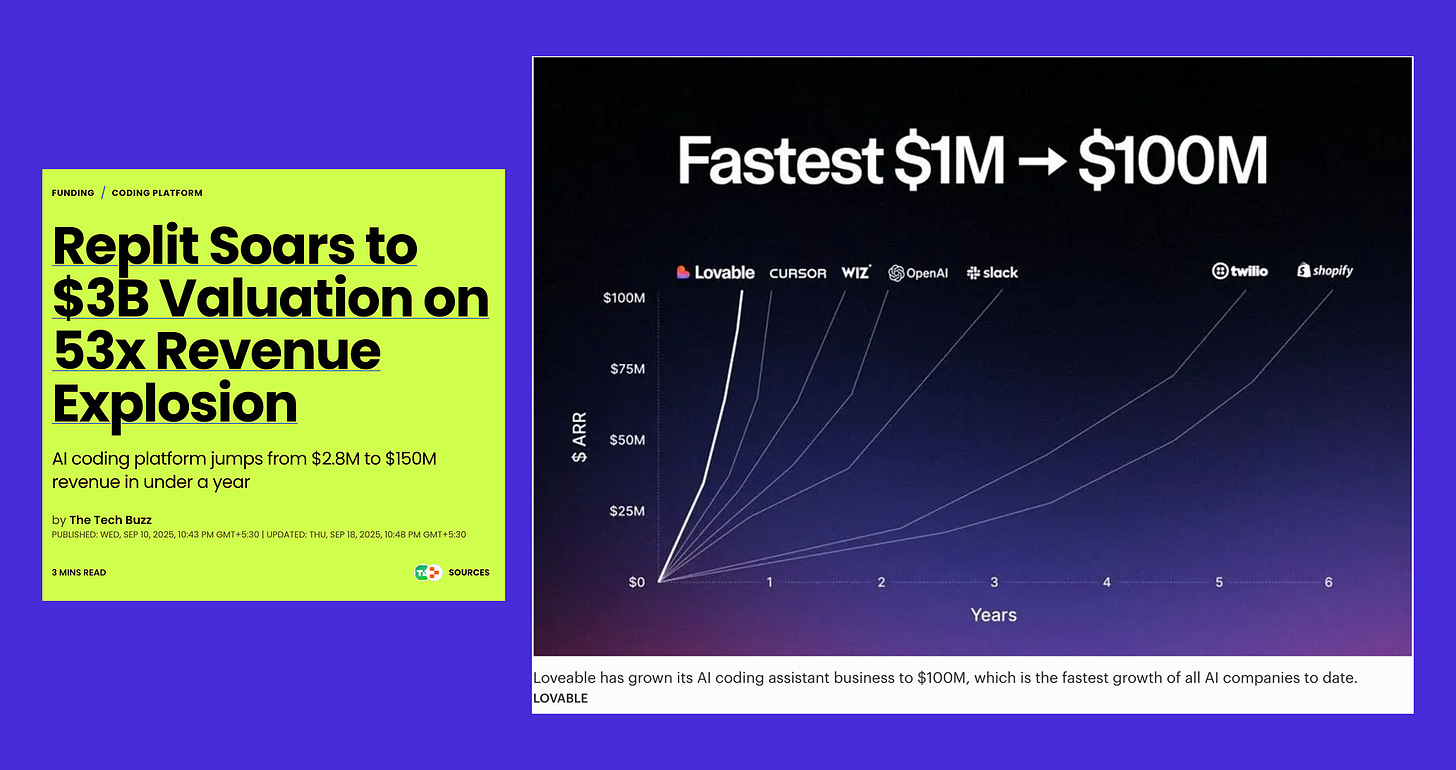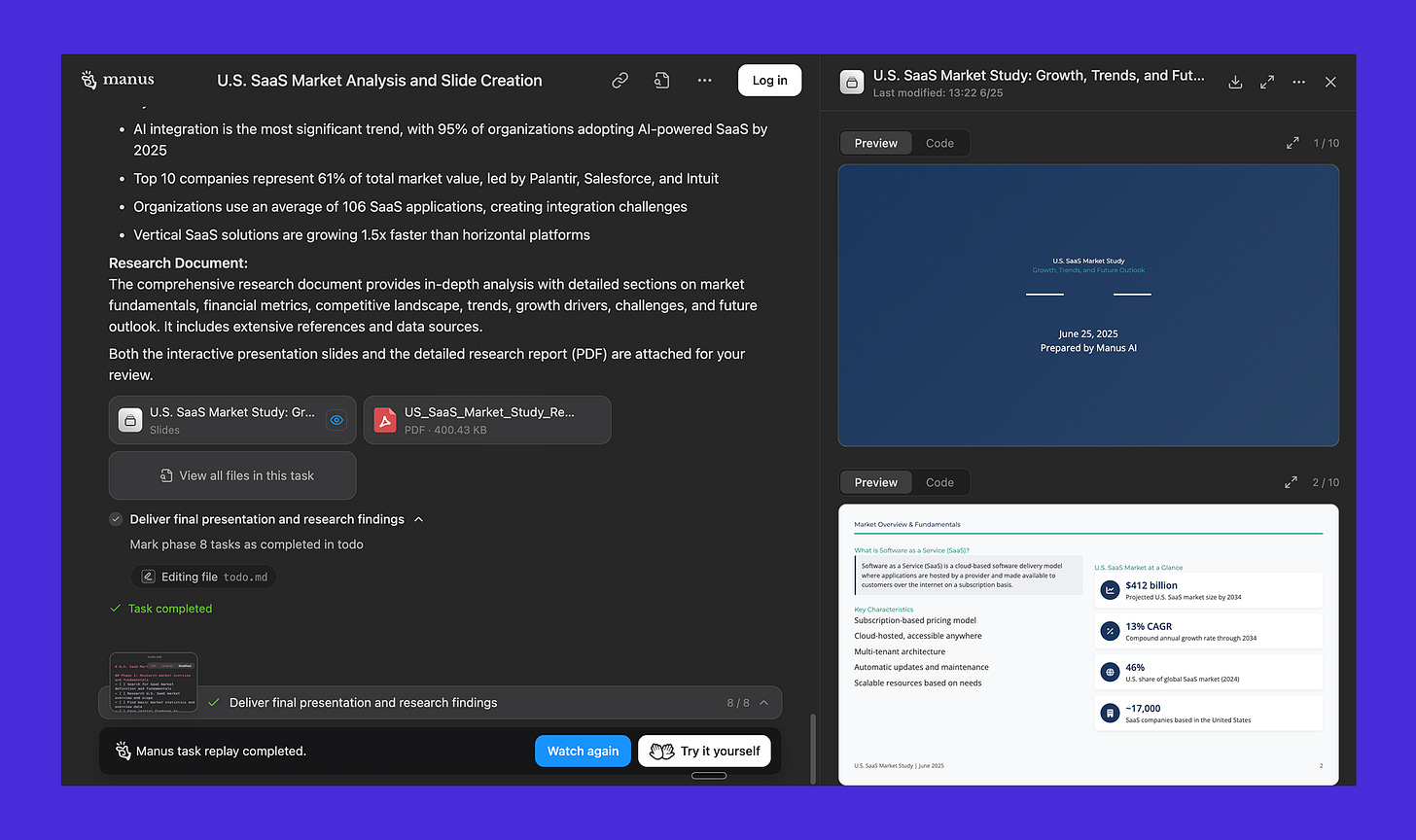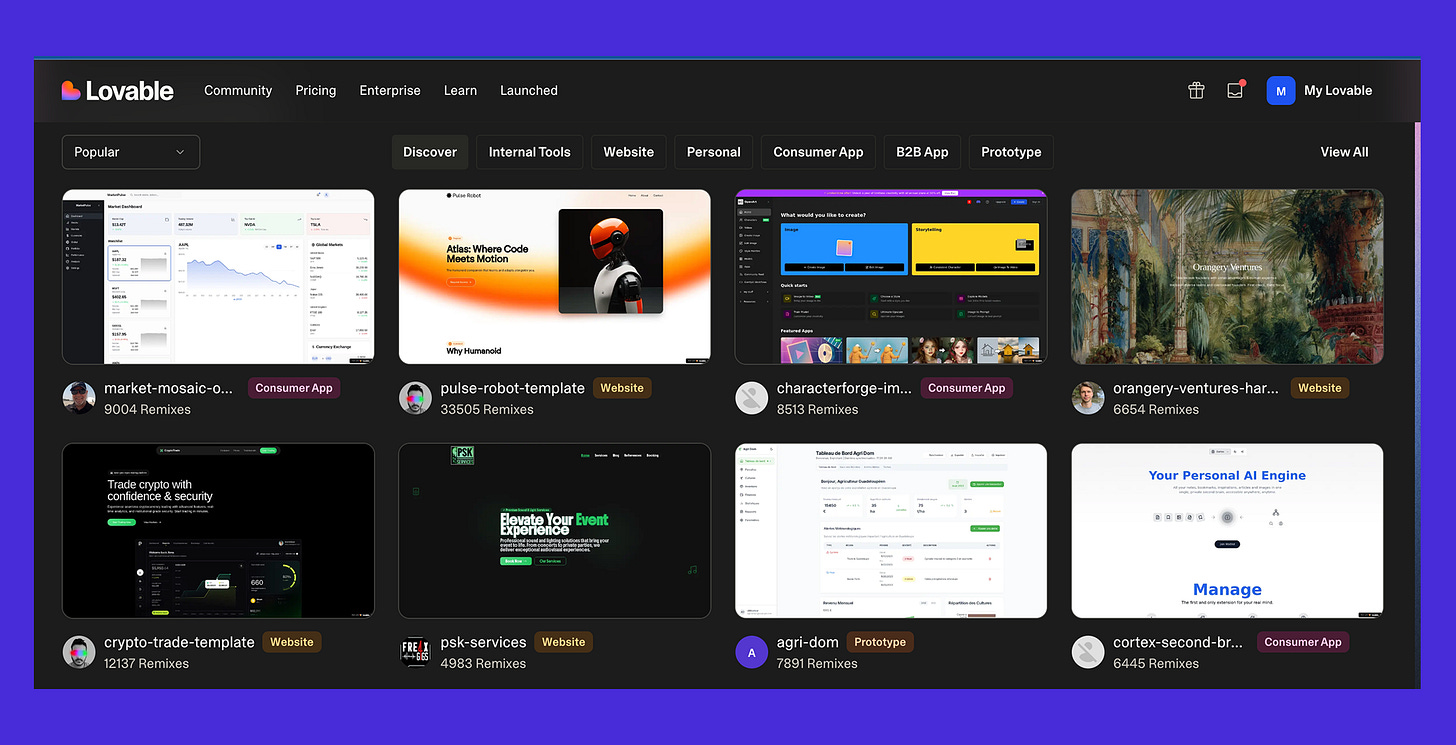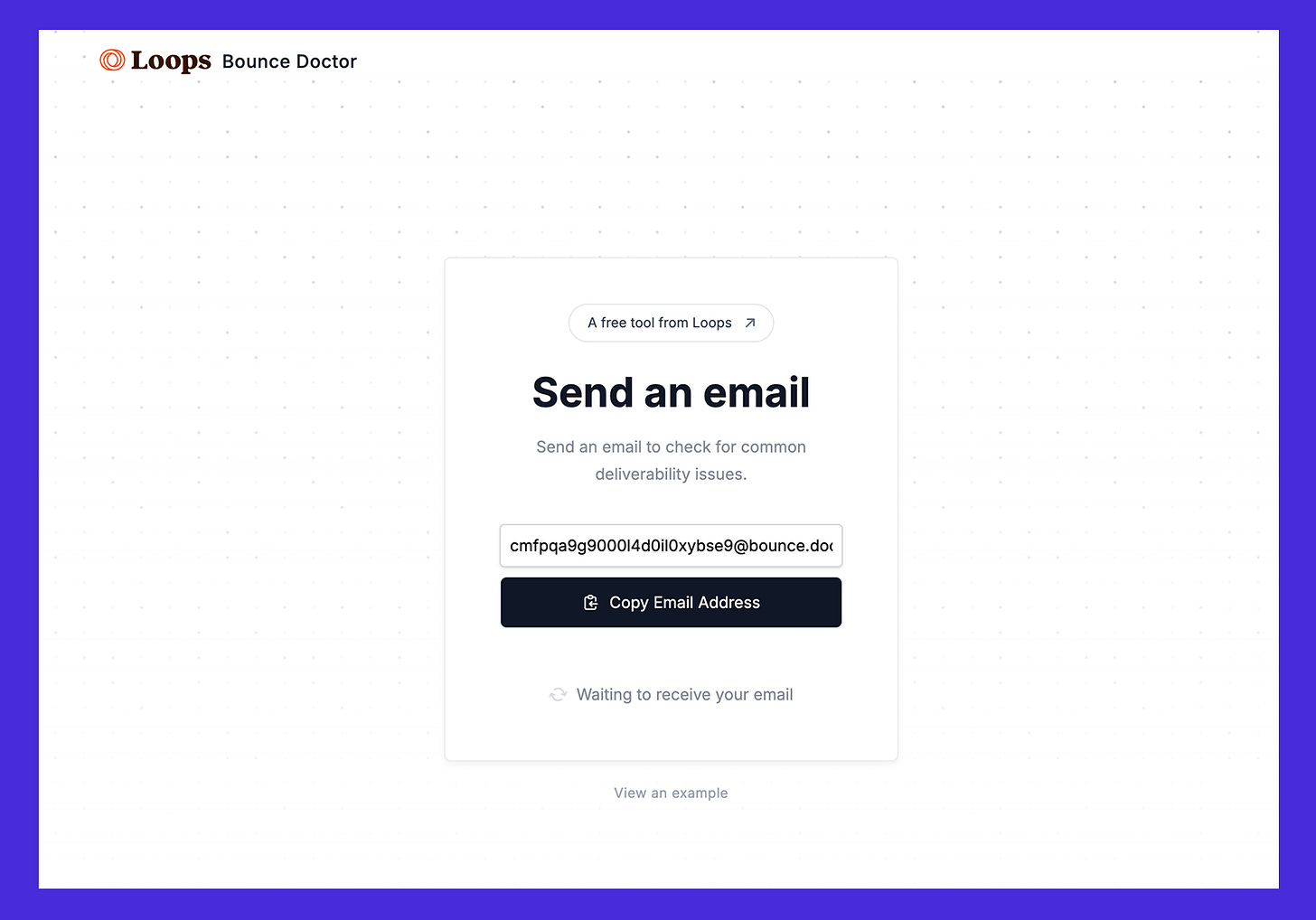Your product is your only positioning
hide the plumbing, show the fountain. sharing a few hacks and examples to do it
I've been watching companies scramble to add "AI" to their homepage and thinking – you're all missing the freaking point.
Here's how to use it to not die in the AI era.
The companies actually winning? They're not talking about AI. They're letting you use it. Right now. On their homepage. Without talking to Brad from sales.
The proof:
Lovable and Replit went beyond $100M in less than a year
Clay = ABM today
Mintlify ships features in 24hrs based on public tweet by a customer
They all did ONE thing: killed "talk to sales" and led with the product.
unless you are in deep tech security or healthcare.
And if you're still defending your enterprise sales motion from 2019, let me be super clear: you're cooked.
The death of "talk to sales" (finally)
Here's the brutal reality nobody wants to admit:
Every SaaS company built between 2016-2023 is built on a dying premise. The entire foundation was "book a demo" and "get a pricing quote."
That worked when buyers had patience. When evaluation cycles were 6 months. When committees made decisions.
But here's what changed:
The CEO is now the buyer. There's never been a push like this where the entire Board / VP / Manager, is demanding "get us AI or we're dead." Companies are literally pivoting, shutting down, or getting acquired purely because of AI.
Instant gratification won. We're in the TikTok era of B2B. People want to swipe, not schedule. They want to create images NOW. Build apps NOW. Generate code NOW.
Speed of building went insane. People are shipping features each week or day, month or quarter are only reserved for big stuff. Now, in all this hype, you got to treat everything as a launch.
Everyone who's actually building knows – the game completely changed.
Why Product-Led is the only AI Positioning
Let me break this down super simply because apparently all the LinkedIn thought leaders and so-called homepage consultants missed the memo:
Old way (you're screwed):
Homepage → Features list → "Book a demo" → Discovery call → POC → Pricing discussion → Legal review → Maybe buy in Q3New way (you might survive):
Homepage → Try it RIGHT NOW → Holy sh*t this works → Swipe credit card → Tell team on slack or share on socialsThe three categories of companies (and how screwed you are)
Category 1: 2016-2023 Enterprise SaaS
Screwed Level: 🔥🔥🔥🔥🔥
You have "Request Demo" as your main CTA.
But if you HAVE to save this, here's your only play:
Build a sandbox. Today. Not next quarter.
Put it on your homepage. Above the fold.
Let people touch your product without talking to Brad from sales.
I don't care if your product is "complex." I don't care if you sell to Fortune 500. If Palantir and Anduril can show a product live or give trial account, you have no excuse.
Category 2: DevTools & Technical Products
Screwed Level: 🔥
You're probably fine. Devs never tolerated "talk to sales" anyway. Just make sure you have:
Instant access and benchmarks
Free tier that actually works or has generous credits to experience the product
Docs that doesn't suck
Category 3: Post-2023 AI Startups
Screwed Level: You better lead with product or you're dead on arrival
If you're building AI and not letting people use it immediately, what are you even doing? Go look at Cursor. Look at Replit. Look at Claude. That’s your competition.
The 3 ways to show your product and ride any AI model hype
1. Replay the product
Record your product doing something sick. Show the replay on loop. Let people see the end result before they even sign up.
Or if you have workflow which gets triggered automatically then have a replay logic. Like exactly you see in ChatGPT or Manus.im
Example: manus.im/share/ir7GHEobMHq8rdW9M3TLp1?replay=1
2. Play with sandbox
Give people a playground where they can start building before they even create an account.
Example: rows.com
3. Let them remix
This is criminally underused. People don't know what prompts to use. They don't know where to start.
So give them templates. Remixes. Starting points. There has to be something in your category which are ideally templates or boilerplate stuff, find that and make it accessible for users.
You're in fintech? Create remixable financial models. You're in marketing? Remixable campaigns. You're in app building? Remixable apps.
4. Show legit benchmarks
Can't show the actual product? Show the scoreboard.
"We analyze calls 47x faster than [competitor]"
"Our AI writes code that passes 94% more tests"
"We process invoices in 12 seconds vs 3 days"
But have receipts. No vague "10x better" BS.
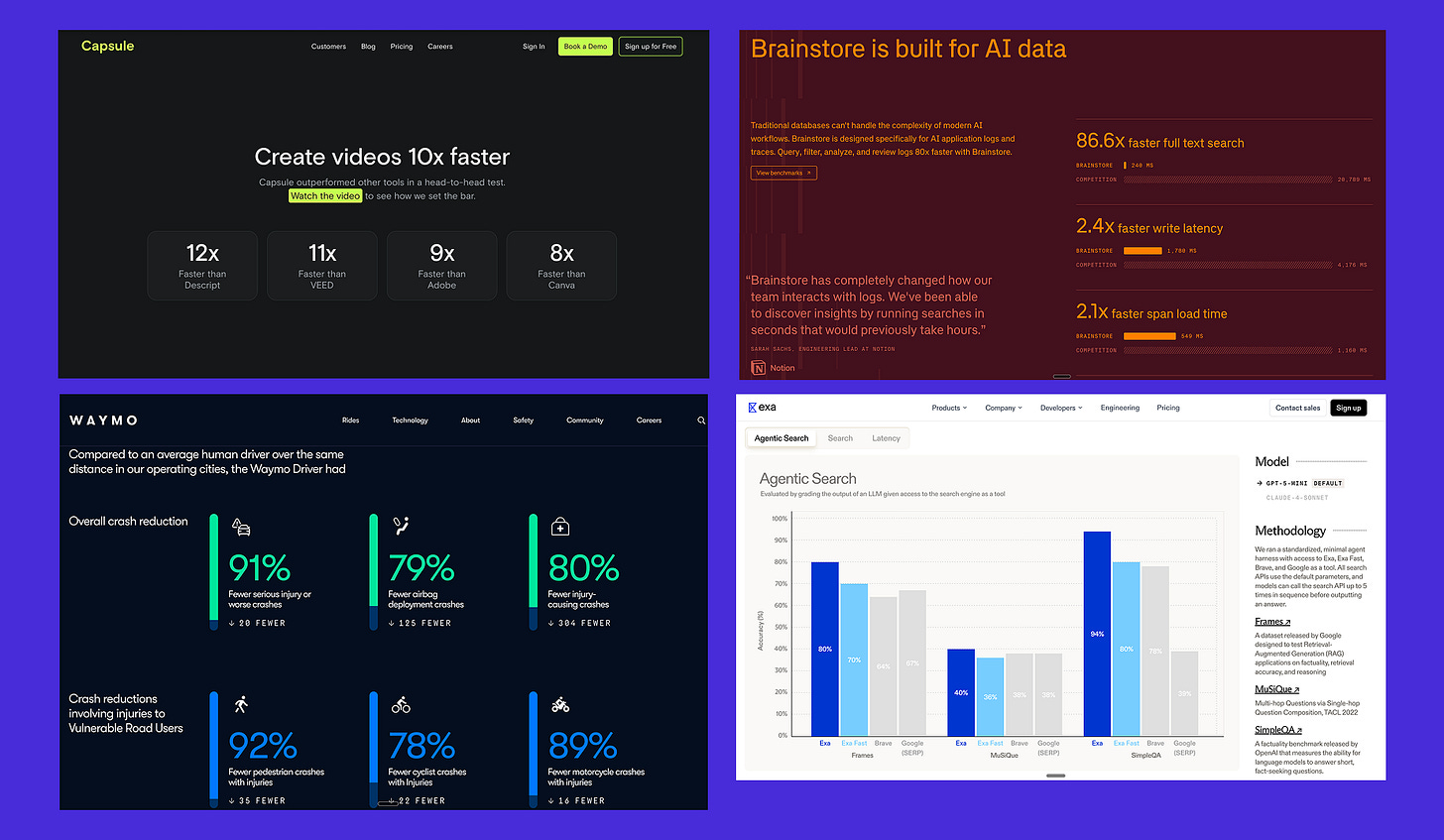
Show Me the Fountain, Hide the Plumbing
What This Means for Positioning
Forget everything you learned about positioning till 2024. Just stick to first principles.
New rules:
1. You ARE the role you replace or the workflow you displace:
"We're building an AI SDR" > "We help with sales automation"
"We're your AI data engineer" > "We provide data solutions"
“We are a customer support platform” > “Building the next Zendesk killer”2. Show, don't tell
Product demo/access on homepage > 1000 words of copy
Live sandbox > 10 case studies
Public benchmarks or comparison > "Trust us we're good"3. Ship your positioning
Your product updates ARE your positioning. Ship daily, position daily.Where to start?
Step 1: Audit your current state
Screenshot your homepage and circle every "talk to sales" CTA
Count clicks to product access (if >1, you're losing buyers)
Calculate your current demo-to-close time
Find your biggest competitor's instant-access feature
Step 2: Pick ONE quick win
Based on your audit, choose the fastest impact:
If no pricing shown: Add a calculator or "starts at"
If no product access: Create one demo video replay
If no templates: Build remixable or “can be copied” examples. even a spreadsheet/doc version of that would do.
Step 3: Get technical context
This week, ask your engineers:
WHERE does our data come from? (understand the source)
WHAT role are we actually replacing? (nail the positioning)
HOW is our architecture different? (find the real differentiator)
WHY does our approach matter technically? (explain the magic)
“WHAT” is agentic in our product?
For founders:
If your first instinct is "but our product is different," you're part of the problem.
Every product can be experienced. Every. Single. One.
Complex analytics platform? Show a dashboard with sample data.
AI voice agent? Let people call a number RIGHT NOW.
Enterprise workflow tool? Sandbox with pre-built workflows.
Hire marketers who understands how the tech genuinely works and for dev tools ONLY hire marketers who can build or code. all marketers will learn how to build / code but that is 4-5 years out. But, currently those who can will earn the top dollar (as it a scarcity)
The guerrilla product-led testing playbook
Can't get permission to kill "talk to sales"? Here are 4 tests you can run tomorrow to prove product-led positioning works (without breaking anything):
Test 1: A/B test “get started” pages
Set up two versions of your "Get Started" button:
Version A: Lands on page that “looks” like your product console (same form, but styled like actual onboarding). You can even make the url be like console to make it real. Do mention in the form submission message that they will get the login details link in email within 1hr (else you are literally scamming)
Version B: Standard demo request form
Or better, even you change the URL from
www.example.com/request-demo »»»» www.example.com/get-started (this would do the trick).
Track which one converts better. If people prefer the console, you've got proof they want to USE not TALK.
Test 2: Competitor page experiment
On your "vs Competitor" pages, test two button types:
"Schedule Demo" vs "See It Working" (links to 60-second product video). No gated content ever.
Track which buttons actually get clicked.
Test 3: Email signature split test
Have half your sales team use: "Book time with me [calendar]"
Other half: "See our product in 60 seconds [Loom or whatever]"
See if it leads to anywhere. You can also add to every sales rep’s calendar.
Test 4: Free tool honeypot
Build a simple tool that does one small thing your product does. Put it on your website as "Free Tools."
The point: Every single one of these tests will show you that people prefer experiencing your product over hearing about it. And you can run all of them without asking permission or changing your main website.
Once you have data showing product-led approaches convert better, then you pitch the CEO.
Bottom line
We're in the instant gratification era. The TikTok-ification of SaaS.
Let your product do the talking. Not, your marketing deck.
And if you're still defending your "enterprise sales motion" from 2019, let me be super clear:
You can pivot to product-led positioning or you can watch your competitors eat your lunch while charging 1/10th your price.
There's no third option.
Restack and share this post if you love it, and share any feedback to make it better. And you want access to QBack tool, let me know.


